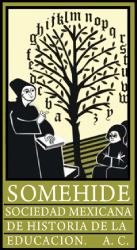Between the “severe sweetness” and the “sweet softness”. Emotional teaching style and the New School Movement in the Argentine teaching profession
DOI:
https://doi.org/10.29351/amhe.v3i2.456Keywords:
The New School Movement, emotions, pedagogical authority, teaching profession, history of educationAbstract
This article aims at exploring the affective traits of the teaching figure promoted by the New School Movement. Taking distance from the positions that grant this pedagogical current the impulse of a new emotional teaching style, characterized as tender and loving, it will be argued that both the supporters of the New School Movement and the normalists that preceded them criticized the sullen and violent teacher and agreed on the caring treatment towards the students. On the other hand, it will be noted that various exponents of the New School Movement were notably uncomfortable with what they called “sweet softness” and preferred “severe sweetness” instead. The will to sustain what Philippe Ariès called “two-faced sentiment” and the concern to prevent the component of severity from fading away can be read as the verification that the seeds of its erosion were already installed, produced effectively, from the second half of the 20th century. Finally, it will be shown that the discussions referring to the affective dimension of the teaching task are closely related to the issue of pedagogical authority.
References
Ahmed, S. (2017). La política cultural de las emociones. Programa Universitario de Estudios de Género de la UNAM.
Arata, N., y Pineau, P. (coords.) (2019). Latinoamérica: la educación y su historia. Nuevos enfoques para su debate y enseñanza. Editorial de la Facultad de Filosofía y Letras de la Universidad de Buenos Aires.
Ariès, P. (1986). La infancia. Revista de Educación, (281).
Bolufer Peruga, M. (2016). En torno a la sensibilidad dieciochesca: discursos, prácticas, paradojas. En M. L. Candau Chacón (ed.), Las mujeres y las emociones en Europa y América. Siglos XVII-XIX (pp. 29-56). Editorial de la Universidad de Cantabria.
Bustamante Vismara, J. (2004). Escuela de primeras letras en la campaña de Buenos Aires, primera mitad del siglo XIX [Tesis de Maestría]. Universidad Torcuato di Tella, Buenos Aires, Argentina.
Carli, S. (2012). Niñez, pedagogía y política. Transformaciones de los discursos acerca de la infancia en la historia de la educación argentina (1880-1955). Miño y Dávila.
Caruso, M. (2001). ¿Una nave sin puerto definitivo? Antecedentes, tendencias e interpretaciones alrededor del movimiento de la Escuela Nueva. En P. Pineau, I. Dussel y M. Caruso, La escuela como máquina de educar. Tres escritos sobre un proyecto de la modernidad (pp. 93-134). Paidós.
Dubet, F. (2006). El declive de la institución. Profesiones, sujetos e individuos en la modernidad. Gedisa.
Dussel, I. (2001). ¿Existió una pedagogía positivista? La formación de discursos pedagógicos en la segunda mitad del siglo XIX. En P. Pineau, I. Dussel y M. Caruso, La escuela como máquina de educar. Tres escritos sobre un proyecto de la modernidad (pp. 53-91). Paidós.
Educadores y enseñantes (1933). La Obra, XIII(234).
Escolano Benito, A. (2018). Emociones & Educación. La construcción histórica de la educación emocional. Visión.
Escuela Normal de Profesores de Paraná. Memoria presentada al Congreso Nacional de 1885 por el Ministro de Justicia, Culto é Instrucción Pública. Taller Tipográfico de la Penitenciaria, 1885.
Ferrière, A. (1935). Lo que importa. El Monitor de la Educación Común, 54(748).
Finocchio, S. (2009). Las invenciones de la docencia en la Argentina (o de cómo la historia escolar transformó progresivamente a los enseñantes en sujetos resignados. Propuesta Educativa, 18(31), 41-53.
Gammerl, B. (2012). Emotional styles – concepts and challenges. Rethinking History, 16(2), 161-175.
Hochschild, A. (2003). The managed heart. Commercialization of human feeling. University of California Press.
Illouz, E. (2007). Intimidades congeladas. Las emociones en el capitalismo. Katz.
Illouz, E. (2010). La salvación del alma moderna. Terapia, emociones y la cultura de la autoayuda. Katz.
La dulzura en el trato a los niños (1933). La Obra, XIII(235).
La posición del maestro en la Escuela Nueva (1928). La Obra, VIII(147).
Las nuevas orientaciones en la enseñanza (1934). El Monitor de la Educación Común, 53(736).
Ley 1420 de Educación Común (1884).
Middleton, D. R. (1989). Emotional style: The cultural ordering of emotion. Ethos, (17), 187-201.
Paiva, L. (1925). Los maestros viejos y la Escuela Nueva. El Monitor de la Educación Común, 43(627).
Pizzurno, P. (1934). ¡Arriba los corazones, educadores! Junio 22 de 1924. El Educador Pablo Pizzurno. Recopilación de trabajos. Medio siglo de acción cultural en la enseñanza secundaria, normal y primaria. Buenos Aires.
Reddy, W. (2008). Emotional styles and modern forms of life. En N. C. Karafyllis y G. Ulshöfer, Sexualized brains: Scientific modeling of emotional intelligence from a cultural perspective (pp. 81–100). MIT Press.
Schiaffino, G. (1935). Diario de un maestro. El Monitor de la Educación Común, 54(747).
Schiaffino, G. (1936). Palabras al niño. La Obra, XVI(279).
Selva, J. (1963). Escuela Normal de Dolores. Dr. Victoriano E. Montes 1888-1963. Talleres Gráficos Didot.
Sobe, N. (2012). Surces and interpretations. Researching emotion and affect in the history of education. History of Education, 41(5), 689-695.
Stearns, P. (1994). American cool: Constructing a twentieth-century emotional style. University Press.
Stearns, P. (2014). Modern patterns in emotions history. En S. Matt y P. Stearns (ed.), Doing emotions in history (pp. 17-40). University of Illinois Press.
Stearns, P. (2016). Emotion and change: Where history comes in. En Y. Ariffin; J.-M. Coicaud y V. Popovski (eds.), Emotions in international politics. Beyond mainstream international relations (pp. 48- 64). Cambridge University Press.
Tolosa, O. (1925). Después de visitar asiduamente una escuela del consejo escolar 1. La Obra, V(105).
Van Gelderen, A. (1878). Lecciones de pedagogía. Imprenta de Martín Biedma.
Varela, P. (2011). Disputas y negociaciones en el campo pedagógico argentino. Influencia de los saberes escolanovistas sobre el sistema educativo público nacional, 1930-1943. Educación, lenguaje y sociedad, 8(8), 75-105.
Downloads
Published
How to Cite
Issue
Section
License
Copyright (c) 2023 Ana Laura Abramowski

This work is licensed under a Creative Commons Attribution-NonCommercial 4.0 International License.
Todos los contenidos del Anuario Mexicano de Historia de la Educación se publican bajo una licencia Creative Commons Atribución No Comercial 4.0 Internacional (CC BY-NC 4.0), que permite compartir (copiar y redistribuir el material en cualquier medio o formato) y adaptar (remezclar, transformar y construir a partir del material) para fines no comerciales, dando los créditos a los autores y a la revista, tal como lo establece la licencia.
La política de acceso abierto y de licencias con “algunos derechos reservados” no niega la propiedad intelectual ni los derechos de los autores respecto a sus artículos, pues ellos son los titulares, en tanto que el Anuario Mexicano de Historia de la Educación no los reserva para sí ni para la institución editora, ya que se apegan a movimientos de acceso abierto como los Principios y Valores del Sistema de Información Científica Redalyc - Red de Revistas Científicas de América Latina y el Caribe, que pugnan por la eliminación de las políticas de embargo para que el autor retenga los derechos de su obra (principio número 8). Así como las políticas de acceso abierto del Directory of Open Access Journals (DOAJ).
Los autores podrán distribuir su propio material en cualquier otro medio o soporte, siempre y cuando sea para fines no comerciales, informando a los editores que el trabajo será publicado nuevamente y dando el crédito correspondiente al Anuario Mexicano de Historia de la Educación.
La publicación en el Anuario Mexicano de Historia de la Educación, por su carácter gratuito, no da derecho a remuneración económica alguna a los autores, ni a los dictaminadores.
Los lectores podrán reproducir (copiar), comunicar, distribuir o hacer obras derivadas de los artículos o colaboraciones publicados en el Anuario Mexicano de Historia de la Educación en los siguientes casos:
- Para fines públicos.
- Sin fines comerciales.
- Que se reconozca la autoría de la obra y se cite su origen con información completa: Apellido/s del autor, inicial/es del nombre/s. (año de publicación). Título del artículo. Nombre de la revista, volumen (número de ejemplar), página inicial del artículo-página final del artículo. DOI o URL (formato sugerido de acuerdo al estilo APA en su versión más reciente).
El cuerpo editorial del Anuario Mexicano de Historia de la Educación asumirá el compromiso de notificar oportunamente a los autores sobre cualquier cambio de ubicación de los artículos en el sitio (cambio de dirección URL o de conexiones para identificar el artículo).
Los autores, al enviar sus trabajos para su posible publicación, deberán tomar en cuenta los puntos anteriores, mismos que se contemplan en el Acuerdo entre autor y el Anuario Mexicano de Historia de la Educación.











